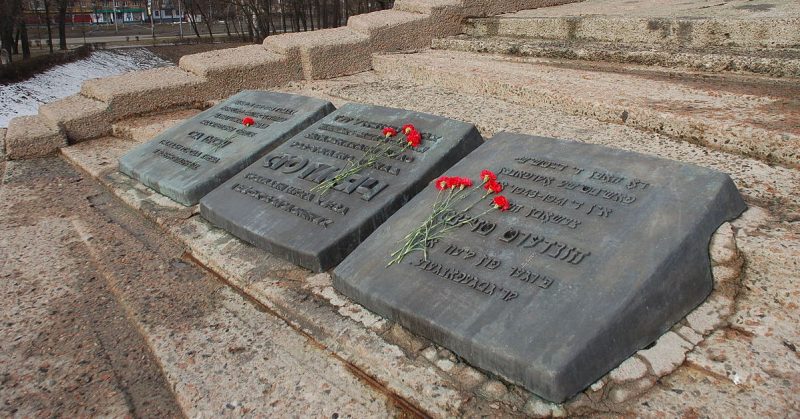Vasily Mikhailovsky remembers the event with clarity even though he was four years old. In the latter part of late September 1941, notices appeared around German-occupied Kyiv, telling Jews to gather at a set location on the city’s edge.
The weather was wonderful, he said, one of a trio of three survivors of Babi Yar still living in Kiev.
There were a large number of people on foot, he recalls. They were moving all their household goods on small wagons.
Vasily is the only survivor of his family. His mother had passed away just after he was born. His father was taken captive as a Red Army soldier and escaped, only to be re-captured and killed when he returned to Kiev and home.
Subsequently, the caretaker of his apartment building told Anastasiya Fomin, his nanny, or Nadya as she was known that she must take him to Babi Yar.
Vasily remembers her as extremely kind. They followed the advice. Next morning, they headed for the ravine, which was about seven kilometers (four miles) northwest of the city, joining thousands of others.
He was tired, and his nanny put him on a cart, he said. Other children were also on the cart, as well as many children’s toys and bags.
He was very joyful because he assumed it was a display such as occurred on May Day or Revolution Day, he said. He told nanny to buy him a little flat or balloon. But that wasn’t a vacation.
It definitely wasn’t that. What was to occur was the largest single killing by German forces during the Second World War. Over the next 48 hours, almost 34,000 Jews were murdered in Babi Yar – the old woman’s gully.
As he and Nadya got closer, German soldiers and police officers recruited locally – “Polizei” as they were called in the German language, flanked either side of the road and forcibly moved them towards the execution zone.
No one dallied, he said. They brutalized people, pushing them with clubs and rifle butts, and herding them like livestock. The street couldn’t contain that many people – people were forced to move quicker. Eventually, they reached some sort of barricade.
Nadya offered her passport to the guard. He remembers her saying that she was Ukrainian.
One of the guards grabbed her collar and shoved her behind the barrier, Mikhailovsky explained. He pointed to a tiny opening and said to “put the child over there.”
As they sat out of the way, they could hear what was occurring to those at the end. They heard screams and cries, but planes flying at low altitude drowned out the noise, he said.
And the music was being played somewhere up ahead.
For tens of years, what happened at Babi Yar was a vacant space in Ukraine’s past. Communist authorities refused at first to acknowledge it, and then, when they finally erected a monument on the site – a tall bronze edifice with figures twisted in pain – the victims were described only as citizens of the Soviet Union, DW.com reported.
During the last days of the Soviet Union, Jewish groups set up a modest monument shaped like a menorah. Following Ukraine’s independence, the government began to signify the massacre with official commemorations. For the 75th anniversary, Ukraine’s leaders and international association are remembering the mass executions with a complete program that’ll include films, conferences, historical exhibits, and concerts. Jewish groups plan to construct a large Holocaust museum near the location. A Canadian organization, the Ukrainian Jewish Encounter, will fund a contest to design a substantial memorial development for the locale.
